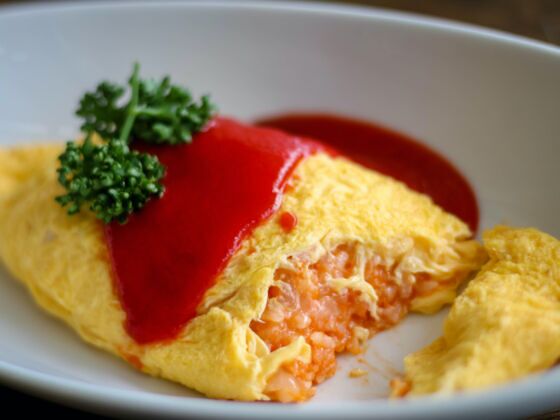Omurice is a modern Japanese dish that combines fried rice with an omelet. Usually prepared at home, omurice starts out with fried rice mixed with pieces of chicken which is then topped with eggs which can be prepared in different ways. However, the fried rice can also be combined with bits of ham or bacon.
@foodwtf #Omurice is a Japanese dish consisting of an omelette made with fried rice and lightly done eggs. This omurice has been dyed blue💙 🎥 @オムライス兄さん🍅🐣🍚 #foodie #foodtiktok #blueomurice #uniquefoods #oddlysatisfying ♬ original sound – ice cream sandwich
The classic omurice is topped with a thin, fluffy layer of egg, which draped over the top of the rice, which has been molded into a mound shape, although it can also be topped with creamy scrambled eggs. The omelet can either be wrapped completely around the rice or a fluffy omelet can be balanced nearly on top of the rice. Another version is called tornado rice, in which chopsticks are used to create a twisting cone shape which envelopes the rice like a tornado.
